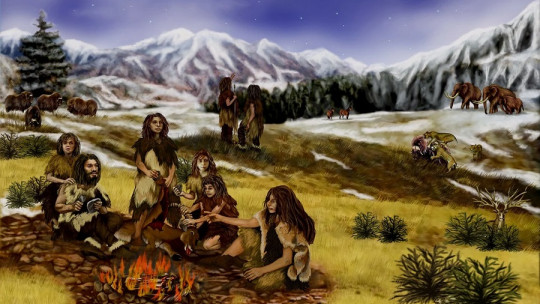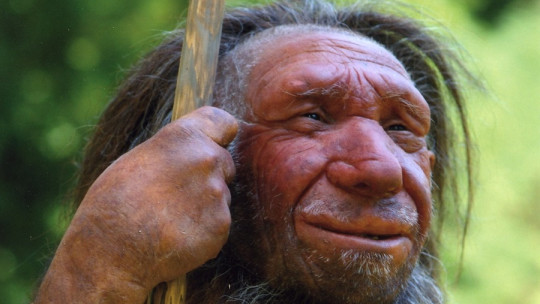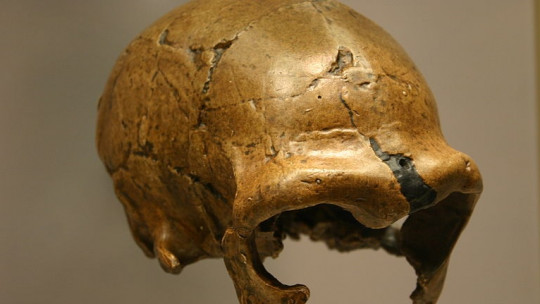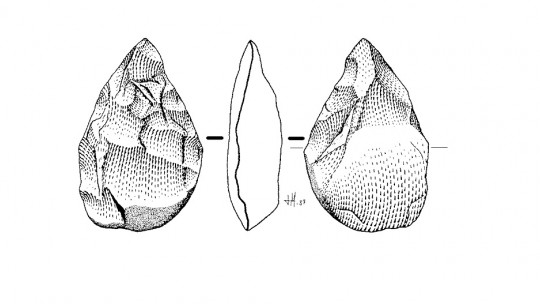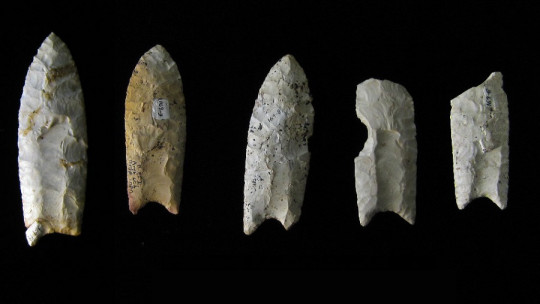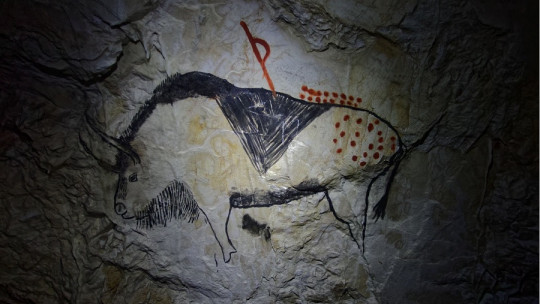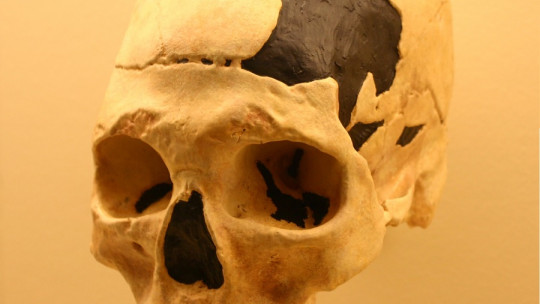
The origin of Homo sapiens or what is the same, our species, has always been a topic of interest for the scientific community, especially when they stopped believing in the idea of divine creation and that all animals magically emerged through spontaneous generation.
There have been two main theories that have tried to explain how human beings are as we are today, with the theory that we come from Africa being the one that has achieved the most strength and scientific evidence. Let’s see what evidence has been found.
The origin of Homo sapiens: what we know about the emergence of our species
Although today the idea that the first human beings must have emerged somewhere in Africa and that they subsequently spread throughout the world by migrating is quite accepted, this idea has not always been had. Throughout the study of the origin of the Homo sapiens Two main theories have been proposed that have tried to elucidate the origin of our species
The first is that of polygenism, also called multiregional hypothesis, which advocates that modern human beings do not actually come from a group of original humans, but from several groups of a previous species that evolved on their own.
The second, which is the most defended by current anthropology, is the one that defends that the first humans lived in Africa and, from there, they migrated to other parts of the world, thus spreading the species and adapting to the climates, emerging races. .
Polygenism
polygenism It is a theory about the origins of human beings that postulates the existence of different lineages that have resulted in human races. The defenders of this theory said that, in reality, humans were a group of species, which were the result of different evolutionary processes that, coincidentally, coincided in some aspects.
The human races would be the result of the fact that the hominid link prior to what we understand today to be the Homo sapiens, would have split into different populations, which, over the millennia, would have given different species that could be classified as part of the same genus, not a species, which would be humans. For this reason polygenism is also called multiregional hypothesis saying that the current state of human beings is due to evolutions of different populations in various regions.
Those who defended these hypotheses usually relied on religious and pseudoscientific criteria, or took empirical evidence in a very arbitrary way. Racism and slavery were justified based on these theses, given that, if there is the notion that blacks, Asians and other races are, in addition to seeing themselves intellectually inferior to whites, different from Europeans as a species, The use of individuals of these races as someone who uses a mule or a horse to carry bags would be equally legitimate.
The African origin
But although racism and slavery positions defended the idea that blacks, whites, Asians and other races are the result of lineages that had evolved separately and were, in truth, different species, these theses ended up being set aside.
Today scientific evidence has shown that the origin of Homo sapiens It’s in Africa, probably somewhere in the Rift Valley although this has become increasingly doubtful.
What is accepted is that the current human species must descend from a group of primitive humans, the first Homo sapiens that must have expanded throughout the world, changing their physical characteristics such as height, skin tone, hair and eyes, teeth and particular skull shape but, in essence, continue to be the same species.
Evidence in the paleoanthropological record, along with archaeological remains, historical inferences, and genetic testing, has indicated that the origin of Homo sapiens It would date back to about 140,000 or 200,000 years ago in sub-Saharan Africa This is evidence accepted, practically, by the entire scientific community.
History and tests of the theory
The theory of the African origin of Homo sapiens It dates back to the end of the 19th century, with the figure of James Prichard, an ethnologist who maintained that there were sufficient reasons to consider that human beings descended from black Africans, statements that, given the racist society of his time, needless to say, were controversial. Assuring that white people, who were seen as pure, intellectually superior, and the pinnacle of animal evolution, were, in fact, descendants of black people, was tremendously controversial.
Charles Darwin, with his studies on evolutionary variety in the Galapagos Islands, had already assumed that, by necessity, there had to be a common ancestor for all human beings. The first ancestor must surely have been some hominid-like primate, which In Darwin’s opinion he should have lived in Africa, given that that continent was the habitat of great apes with a size and shape very similar to that of humans, in addition to the fact that some were capable of maintaining a bipedal position.
With the passing of the 20th century and thanks to the improvement of anthropological and genetic techniques, it was possible to establish with greater certainty where and when the origin of our species was located.
Fossil evidence
Based on bones found in different places in Africa, it has been hypothesized that anatomically modern humans evolved on that continent during the last 200,000 years, from a pre-existing population of hominids.
Anatomically modern refers to hominids that had features very similar to those of modern humans: highly rounded skull, light and slender skeleton, facial retraction, gracefulness of the cheekbones…
The first fossils with these characteristics were found in East Africa, near the Omo River (Ethiopia), being dated 195,000. These remains are called the men of Kibish, and are considered the Homo sapiens older.
Behavior and culture
Although it is logical to think that it is very difficult to know how hominid populations that lived long ago behaved, the truth is that they have left some remains behind them that allow us to know, in a more or less suggested way, what their cultures were like.
Modern human behavior gave rise to the Upper Paleolithic a period that was established in Europe 30,000 years ago, but in Africa it occurred earlier, about 70,000 years ago.
This is known from some paintings found in caves, as is the case in South Africa. They are abstract representations painted with red ocher. Objects have also been found, such as stone points and arrows made of bone, between 70,000 and 90,000 years old.
Paleolinguistic studies
Paleolinguistics is the discipline that studies ancestral languages that is, languages that were spoken millennia ago, about which it is only possible to make assumptions based on the living languages spoken today, as would be the case of Indo-European reconstructed from European and Indian languages.
But prior to Indo-European, and any other language, Protosapiens, the original language, must have been spoken, before it split as in the legend of the tower of Babel.
Paleolinguists have hypothesized that Languages have more phonemes the more related they are to the oldest populated regions That is, populations derived from a founding population, but that have distanced themselves from it, reduce their phonetic repertoire, having fewer sounds.
One should not fall into the mistake that these languages, because they have fewer sounds, will necessarily have less vocabulary. Phonemes and vocabulary are not directly correlated, but phonemes and distance from the African continent are.
504 living languages in the world have been studied, and it has been seen that those with the most sounds, some having the rare “clicks” or consonant clicks (ʘ, ǀ, ǃ, ǂ and ǁ), are found in Africa, such as the case of the Joisán languages with more than 140 sounds.
On the contrary, The languages with the smallest phonetic repertoire would be found in South America and the islands of Oceania, one of the regions that were surely populated by humans very late. Hawaiian, with only 13 phonemes, is the language with the fewest sounds.
Genetic evidence: Adam and Eve
Thanks to the study of human genetics, it is known that by studying the family tree of the entire human species, there would have been a common male and a female ancestor, who have been called Mr. Adam, surname Chromosomic, and Mrs. Eve, surname Mitochondrial. The name is not coincidental, since, in reality, the entire human species would descend from these individuals, comparable to the Christian idea of Adam and Eve in the Garden of Eden.
The difference between the biblical characters and these common human ancestors is that the latter did not know each other, since they lived in very different times. Mitochondrial Eve must have lived 190,000 years ago probably somewhere in Tanzania, while chromosomal Adam is not very clear, but he could have lived between 270,000 and 60,000 years ago.
Mitochondrial DNA, that is, circular DNA, very similar to that of a bacteria, found within the mitochondria, is inherited maternally. The most recent common ancestor that would have given us that mitochondrial DNA had to be female, and that is why the existence of Mitochondrial Lady Eva has been proposed.
The Y chromosome can only be inherited through the male route, and it is the sex chromosome that defines being male. Broadly speaking, it would have happened as with the case of mitochondrial Eve. All men would have a common ancestor, a man who had the first Y chromosome which would be Mr. chromosomal Adam.
The problem of drawing the line
Many people, when they hear about human evolution, imagine the classic image of several individuals, placed in a line, going from a quadruped ape, through hominids from more to less hairy and arriving at the Homo sapiens, with a spear and loincloth. This image, although quite illustrative, leads to the erroneous belief that human evolution has occurred in a similar way to how Pokémon do. Phase 1: monkey, phase 2: australopithecus, phase 3: Homo habilis … final phase: Homo sapiens.
But really the process was much more progressive, and this is observed in the bone remains. It is not easy to delimit where a species begins and where it ends by looking at its fossil record It is clear that if you take two individuals who lived in chronologically very separate times, such as the Australopithecus and the Neanderthals, you see differences.
However, this is not so simple when comparing bones separated by only about 100,000 years or even from species that coexisted and that had not yet differentiated themselves too much, as must have been the case of the first Neanderthals and the first Homo sapiens. In fact, it is believed that a significant part of the European population are descendants of fertile hybrids of Homo sapiens with Neanderthals, the latter species being responsible for Europeans suffering more cases of Crohn’s disease, type II diabetes and biliary cirrhosis.
An example of this is bone finds made in Jebel Irhoud, in Morocco In the 1960s, bones belonging to two adult individuals and one child were found: two adult skulls, a child’s jaw, a child’s humerus, and a fragment of the coccyx. Since these bones presented primitive or, rather, crude features, they were classified as Neanderthals.
Decades later, and reanalyzing the bones, his mind was changed. Those bones must have belonged to Homo sapiens, what happened is that they must have been of a very primitive variety. With this case you can see how difficult it is to establish the line, given that, since evolution is a continuous process, it is difficult to establish the criterion that serves to clearly delimit between one species and another.


